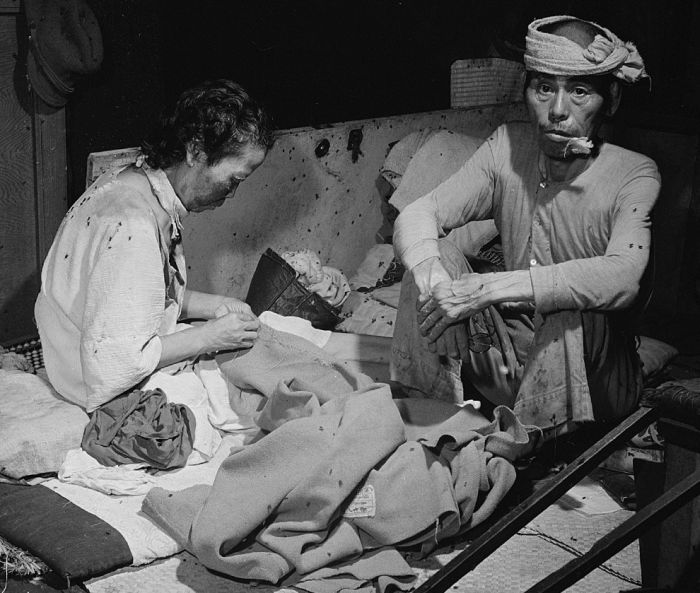|
|
History: Atomic Bombing Of Hiroshima, Japan
|
By the time they reached Kokura a half hour later, a 70% cloud cover had obscured the city, prohibiting the visual attack required by orders. After three runs over the city, and with fuel running low because a transfer pump on a reserve tank had failed before take-off, they headed for their secondary target, Nagasaki. Fuel consumption calculations made en route indicated that Bockscar had insufficient fuel to reach Iwo Jima and would be forced to divert to Okinawa. After initially deciding that if Nagasaki were obscured on their arrival the crew would carry the bomb to Okinawa and dispose of it in the ocean if necessary, the weaponeer Navy Commander Frederick Ashworth decided that a radar approach would be used if the target was obscured.
At about 07:50 Japanese time, an air raid alert was sounded in Nagasaki, but the "all clear" signal was given at 08:30. When only two B-29 Superfortresses were sighted at 10:53, the Japanese apparently assumed that the planes were only on reconnaissance and no further alarm was given.
A few minutes later at 11:00, The Great Artiste, the support B-29 flown by Captain Frederick C. Bock, dropped instruments attached to three parachutes. These instruments also contained an unsigned letter to Professor Ryokichi Sagane, a nuclear physicist at the University of Tokyo who studied with three of the scientists responsible for the atomic bomb at the University of California, Berkeley, urging him to tell the public about the danger involved with these weapons of mass destruction. The messages were found by military authorities but not turned over to Sagane until a month later. In 1949, one of the authors of the letter, Luis Alvarez, met with Sagane and signed the document.
At 11:01, a last minute break in the clouds over Nagasaki allowed Bockscar's bombardier, Captain Kermit Beahan, to visually sight the target as ordered. The "Fat Man" weapon, containing a core of ~6.4 kg (14.1 lbs.) of plutonium-239, was dropped over the city's industrial valley. It exploded 43 seconds later at 469 meters (1,540 ft) above the ground exactly halfway between the Mitsubishi Steel and Arms Works in the south and the Mitsubishi-Urakami Ordnance Works (Torpedo Works) in the north. This was nearly 3 kilometers (2 mi) northwest of the planned hypocenter; the blast was confined to the Urakami Valley and a major portion of the city was protected by the intervening hills. The resulting explosion had a blast yield equivalent to 21 kilotons of TNT (88 TJ). The explosion generated heat estimated at 3,900 degrees Celsius (4,200 K, 7,000 °F) and winds that were estimated at 1005 km/h (624 mph).
|
|









